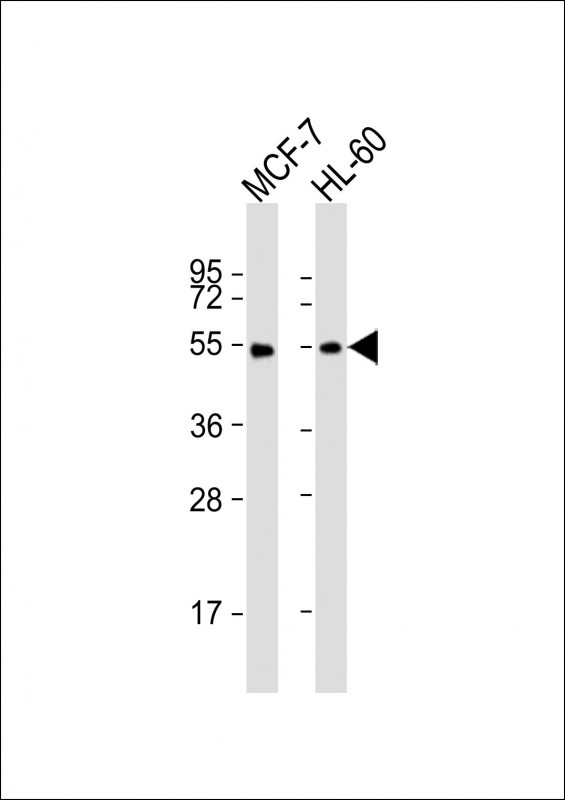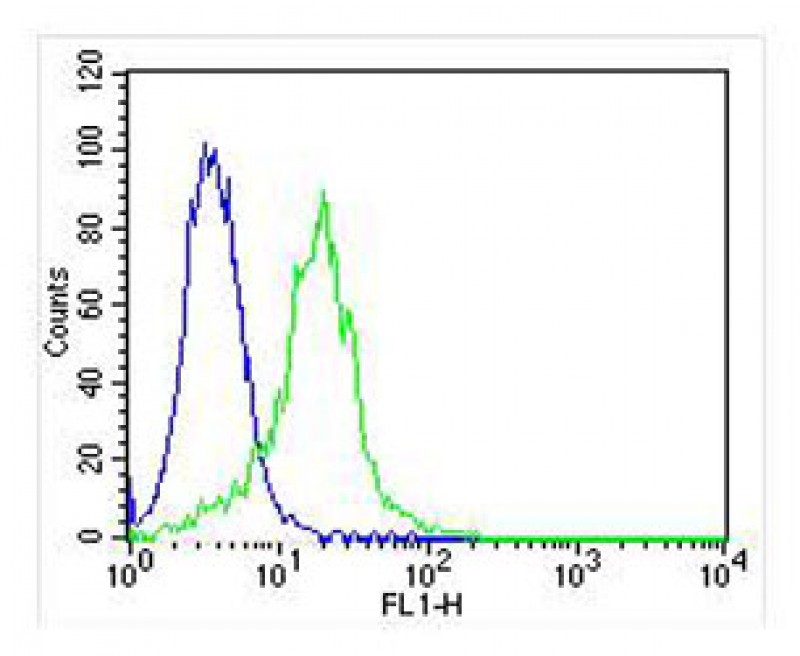LPL Antibody (Center)
Affinity Purified Rabbit Polyclonal Antibody (Pab)
- SPECIFICATION
- CITATIONS
- PROTOCOLS
- BACKGROUND

Application
| WB, IHC-P, FC, E |
|---|---|
| Primary Accession | P06858 |
| Other Accession | Q06000, P49923, P11152, P11151, NP_000228.1, Q29524 |
| Reactivity | Human |
| Predicted | Bovine, Mouse, Pig, Rat, Sheep |
| Host | Rabbit |
| Clonality | Polyclonal |
| Isotype | Rabbit IgG |
| Calculated MW | 53162 Da |
| Antigen Region | 300-327 aa |
| Gene ID | 4023 |
|---|---|
| Other Names | Lipoprotein lipase, LPL, LPL, LIPD |
| Target/Specificity | This LPL antibody is generated from rabbits immunized with a KLH conjugated synthetic peptide between 300-327 amino acids from the Central region of human LPL. |
| Dilution | WB~~1:1000-1:2000 IHC-P~~1:10~50 FC~~1:25 |
| Format | Purified polyclonal antibody supplied in PBS with 0.09% (W/V) sodium azide. This antibody is purified through a protein A column, followed by peptide affinity purification. |
| Storage | Maintain refrigerated at 2-8°C for up to 2 weeks. For long term storage store at -20°C in small aliquots to prevent freeze-thaw cycles. |
| Precautions | LPL Antibody (Center) is for research use only and not for use in diagnostic or therapeutic procedures. |
| Name | LPL |
|---|---|
| Synonyms | LIPD |
| Function | Key enzyme in triglyceride metabolism. Catalyzes the hydrolysis of triglycerides from circulating chylomicrons and very low density lipoproteins (VLDL), and thereby plays an important role in lipid clearance from the blood stream, lipid utilization and storage (PubMed:11342582, PubMed:27578112, PubMed:8675619). Although it has both phospholipase and triglyceride lipase activities it is primarily a triglyceride lipase with low but detectable phospholipase activity (PubMed:12032167, PubMed:7592706). Mediates margination of triglyceride-rich lipoprotein particles in capillaries (PubMed:24726386). Recruited to its site of action on the luminal surface of vascular endothelium by binding to GPIHBP1 and cell surface heparan sulfate proteoglycans (PubMed:11342582, PubMed:27811232). |
| Cellular Location | Cell membrane {ECO:0000250|UniProtKB:P11151}; Peripheral membrane protein {ECO:0000250|UniProtKB:P11151}; Extracellular side {ECO:0000250|UniProtKB:P11151}. Secreted. Secreted, extracellular space, extracellular matrix. Note=Newly synthesized LPL binds to cell surface heparan proteoglycans and is then released by heparanase Subsequently, it becomes attached to heparan proteoglycan on endothelial cells (PubMed:27811232). Locates to the plasma membrane of microvilli of hepatocytes with triglyceride-rich lipoproteins (TRL) Some of the bound LPL is then internalized and located inside non- coated endocytic vesicles (By similarity) {ECO:0000250|UniProtKB:P11151, ECO:0000269|PubMed:27811232} |
| Tissue Location | Detected in blood plasma (PubMed:11893776, PubMed:12641539, PubMed:2340307). Detected in milk (at protein level) (PubMed:2340307). |
If you have used an Abcepta product and would like to share how it has performed, please click on the "Submit Review" button and provide the requested information. Our staff will examine and post your review and contact you if needed.
If you have any additional inquiries please email technical services at tech@abcepta.com.














 Foundational characteristics of cancer include proliferation, angiogenesis, migration, evasion of apoptosis, and cellular immortality. Find key markers for these cellular processes and antibodies to detect them.
Foundational characteristics of cancer include proliferation, angiogenesis, migration, evasion of apoptosis, and cellular immortality. Find key markers for these cellular processes and antibodies to detect them. The SUMOplot™ Analysis Program predicts and scores sumoylation sites in your protein. SUMOylation is a post-translational modification involved in various cellular processes, such as nuclear-cytosolic transport, transcriptional regulation, apoptosis, protein stability, response to stress, and progression through the cell cycle.
The SUMOplot™ Analysis Program predicts and scores sumoylation sites in your protein. SUMOylation is a post-translational modification involved in various cellular processes, such as nuclear-cytosolic transport, transcriptional regulation, apoptosis, protein stability, response to stress, and progression through the cell cycle. The Autophagy Receptor Motif Plotter predicts and scores autophagy receptor binding sites in your protein. Identifying proteins connected to this pathway is critical to understanding the role of autophagy in physiological as well as pathological processes such as development, differentiation, neurodegenerative diseases, stress, infection, and cancer.
The Autophagy Receptor Motif Plotter predicts and scores autophagy receptor binding sites in your protein. Identifying proteins connected to this pathway is critical to understanding the role of autophagy in physiological as well as pathological processes such as development, differentiation, neurodegenerative diseases, stress, infection, and cancer.





